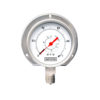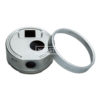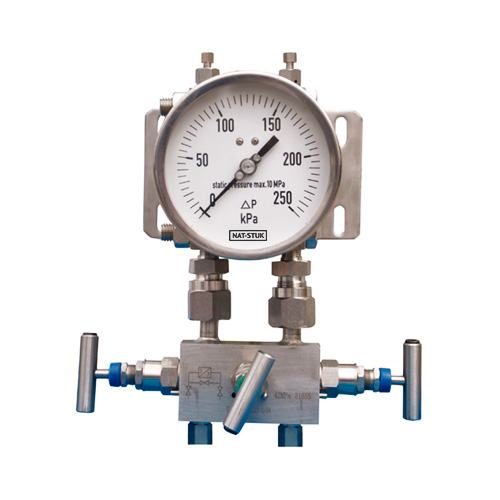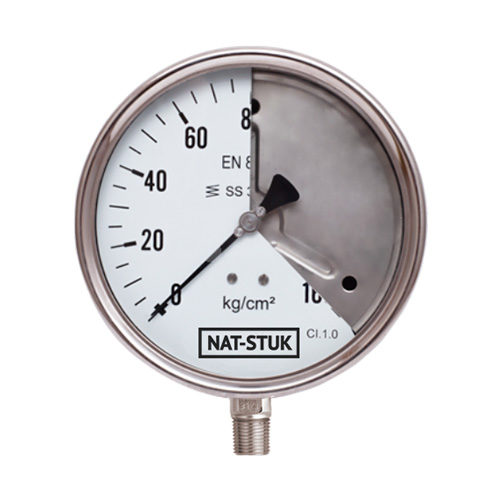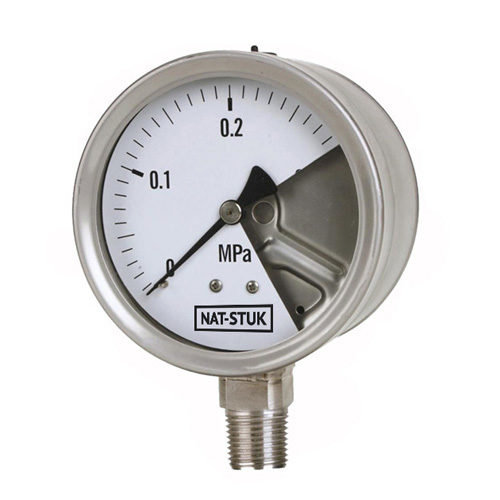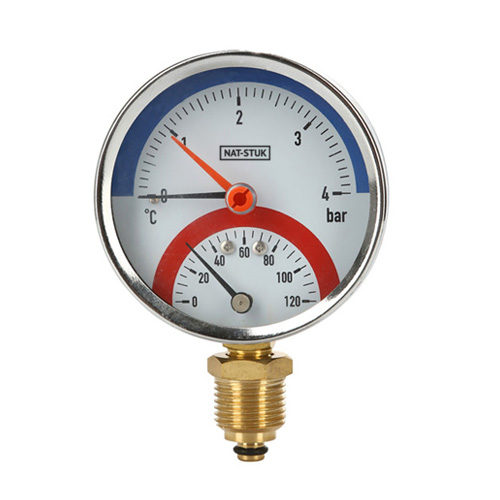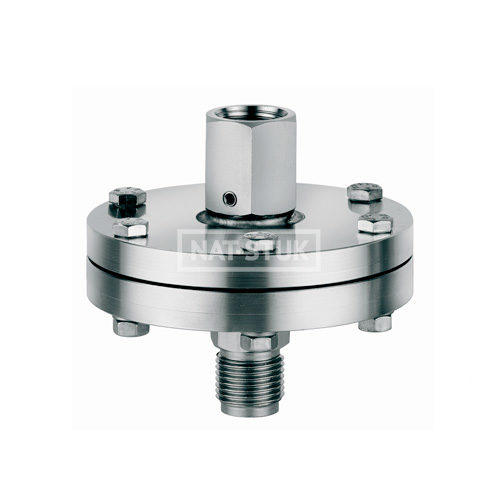High Steady Differential Pressure Gauge
High Steady Differential Pressure Gauge is mainly used for measuring the difference between two pressure values, in the plus and minus ends of filter, the level of liquid, the entrance and exit of pump, oil pipeline, gas pipeline and high pressure pump station and so on. It is excellent while over pressure take place, also suitable for corrosion environments.
Specifications
Sizes: 4″& 6″ ( 100 & 150 mm)
Case: 304 Stainless Steel case
Wetted parts: 316 Stainless Steel, double bourdon tube
Ranges: 16KPa, 25KPa, 40KPa…600Kpa
Diaphragm material: 316L(for negative pressure) 316Ti(for positive pressure)
Description
High Steady Differential Pressure Gauge is mainly used for measuring the difference between two pressure values, in the plus and minus ends of filter, the level of liquid, the entrance and exit of pump, oil pipeline, gas pipeline and high pressure pump station and so on. It is excellent while over pressure take place, also suitable for corrosion environments.
Specifications
Sizes: 4″& 6″ ( 100 & 150 mm)
Accuracy: 1.6% of full scale
Case and ring: 304 Stainless Steel matte finished
Lens: Polycarbonate or safety glass
Diaphragm material: 316L(for negative pressure) 316Ti(for positive pressure)
Operating Temperature: Ambient: -20 to 60°C (-4°F to 140°F)
Process fluid: max 60°C (140°F)
Overpressure protection: both ends support 1,500PSI/10 MPa
Material of blow out vent and filling plug:oil resistant rubber
Connection: 1/4″ or 1/2″ NPT or BSP bottom
Ranges: 16KPa、25KPa、40KPa…600Kpa
Protection degree: IP65
Dry
Protection
– If pressure gauges are to be used for steam service, a siphon tube filled with water must be installed between gauge and line to prevent live steam from entering the Bourdon tube.
– A gauge cock should be installed in the pressure line. This might be the standard shut-off valve or a needle valve for throttling pressure pulses.
– If severe pulsation exists, the gauge should be protected by adding a throttling orifice
screw in the gauge socket or by addition of a pulsation damper, such as a snubber.
– A diaphragm seal should be used in applications where process media should not come in contact with gauge.
We invite you to check out our post: When should you use liquid-filled pressure gauges?
Follow us on Twitter and Instagram

